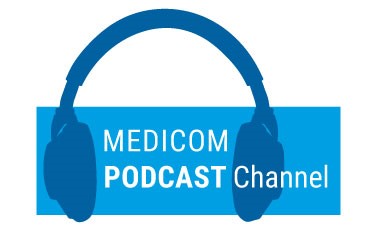"Patients with advanced chronic heart failure resistant to usual medical therapies with deteriorating heart function receiving mechanical support as a bridge to transplant (BTT) or as destination therapy (DT) can recover the heart function enough to have the pump removed, freeing up the precious donor heart for another individual," Dr. Emma J. Birks of the University of Kentucky, in Lexington, and Dr. Stavros Drakos of the University of Utah, in Salt Lake City, told Reuters Health in a joint email.
LVADs, increasingly used to treat patients with advanced heart failure, provide significant hemodynamic unloading that can result in structural reverse remodeling and improved cardiac function. How often this allows pump removal remains unclear.
Dr. Birks and Dr. Drakos and colleagues in RESTART-HF, a prospective, multicenter, nonrandomized study, investigated whether a uniform protocol of LVAD pump-speed optimization combined with an aggressive drug regimen and regular testing of underlying function could lead to an enhanced rate of myocardial recovery.
The analysis included 40 patients with chronic advanced heart failure from nonischemic cardiomyopathy who received the Heartmate II continuous axial flow LVAD (22 implanted as DT and 18 implanted as BTT).
Overall, 19 of 36 patients (52.8%) who completed the protocol were explanted or had their LVAD decommissioned, including 18 patients who reached explant criteria within the 18-month time after LVAD implantation required by the primary endpoint.
Twelve of these patients had the pump fully explanted, the authors report in Circulation.
Of the 16 patients who met explant criteria within 18 months, 16 (40% of the original 40 enrolled) reached the primary endpoint of LVAD explant within 18 months with freedom from mechanical circulatory support/heart transplantation at one year after explant.
Of the two patients not reaching this landmark, one committed suicide 15 days after explantation and the other developed recurrent heart failure and was transplanted at 227 days after explantation (this patient remains alive and well 3.5 years later).
Overall, 15 explanted patients remain alive and well at a mean 2.1 years post-LVAD explant.
None of the factors analyzed (age, sex, duration of heart failure, presence of cardiac resynchronization therapy, ventricular arrhythmias, and others) independently predicted whether patients recovered or not.
Of the 17 patients who were not explanted, nine remained on ongoing LVAD support at a mean 3.97 years after LVAD implantation, four were transplanted after a mean of 1.8 years, one was relocated and withdrew after 9.5 months, and three patients died between two and 2.8 years after LVAD implant.
"Reversal of even advanced chronic heart failure can occur in a significant proportion of patients using mechanical support combined with specific pharmacological therapy aimed to improve their heart function," Dr. Birks and Dr. Drakos said. "We would like physicians to use such a protocol to try and recover the heart function of patients receiving mechanical support, particularly those with nonischemic cardiomyopathy studied in this study."
"Encouraged by these results, our research teams have already been performing additional studies both in the clinic and in the lab to identify the biological mechanisms that drove this remarkably favorable response," they added. "These could lead to novel drug targets, and the future goal is also to recover more failing hearts possibly without the help of surgeries/LVAD but just with drugs that will be able to activate these mechanisms."
Dr. Isaac George of the College of Physicians and Surgeons of Columbia University, in New York City, who recently evaluated structural and functional cardiac changes after prolonged LVAD, told Reuters Health by email, "This study, although in small numbers, shows that aggressive regimens can lead to recovery sufficient to remove an LVAD in certain patient. Strict follow-up is mandatory to maintain these benefits."
"I think it's hard to make this standard of care until we have more data on which patients have the potential to recover or not, but it opens a huge door to extend the life of a native failing heart without transplant, as every six months can be so crucial," said Dr. George, who was not part of the research. "The timing of when to start the protocol, the LVAD management, duration of support, and other adjunctive biologic therapies may be able to increase the success of recovery protocols to over 50%."
By Will Boggs MD
SOURCE: https://bit.ly/3oxmp8l Circulation, online October 26, 2020.
Posted on
Previous Article
« Letter from the Editor Next Article
Liver metastases suppress tumor-specific immunity »
« Letter from the Editor Next Article
Liver metastases suppress tumor-specific immunity »
Related Articles


September 14, 2021
ESC 2021 Highlights Podcast

© 2024 Medicom Medical Publishers. All rights reserved. Terms and Conditions | Privacy Policy
HEAD OFFICE
Laarderhoogtweg 25
1101 EB Amsterdam
The Netherlands
T: +31 85 4012 560
E: publishers@medicom-publishers.com

